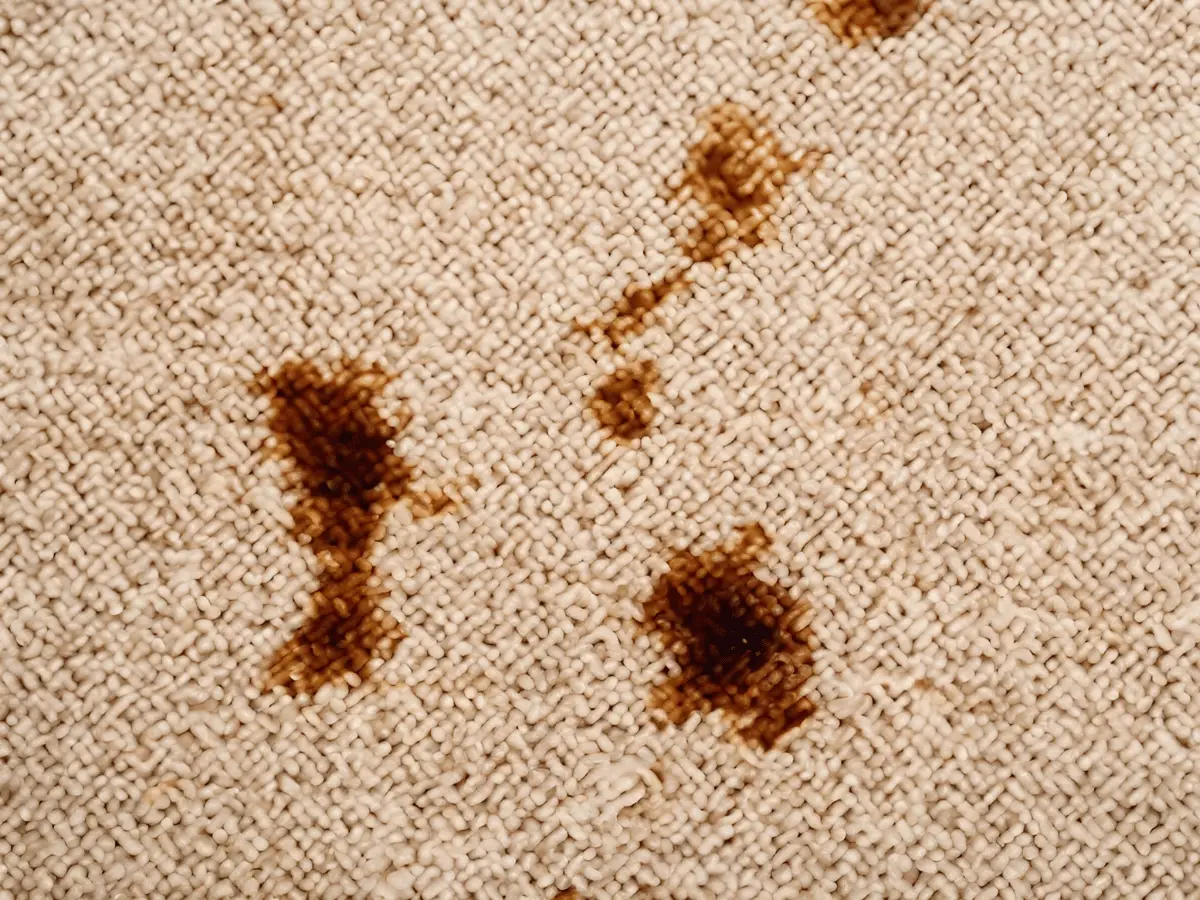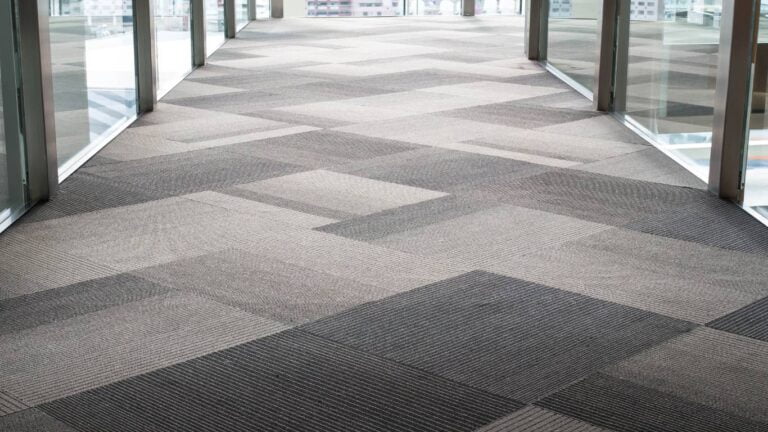In the hustle and bustle of daily life, spills and stains are bound to happen, and oils are some of the most common culprits. You might encounter cooking oils splattered during an intense frying session or the grease from a dropped slice of pizza. Other frequent offenders include peanut butter, which can leave a greasy residue, and crayons, which, when melted, seep oil into fabrics. Even motor oil can find its way indoors, hitching a ride on shoes from the garage to your living room carpet. This article offers a comprehensive guide to tackling these greasy offenders, from identifying the type of oil stain to DIY removal techniques and when to seek the help of professional cleaners.
Understanding Oil Stain Challenges
Oil Properties and Carpet Fibres
The difficulty in eliminating oil stains from carpets and upholstery is due to the oils’ hydrophobic nature, causing them to repel water. This characteristic makes them particularly tenacious when they come into contact with absorbent materials. Upon contact with a carpet, the oil penetrates the fibres, bonding in a manner that typical water-based cleaning methods find challenging to address.
Impact on Different Carpet Types
The specific carpet fibres in question also complicate the stain removal process. Synthetic fibres, derived from petroleum-based products, are more likely to retain oil stains due to the oils adhering to similar components within the fibres.
Conversely, natural fibres, which are cellulose-based, are more susceptible to moisture-induced discolouration, an issue that can be exacerbated during the oil stain removal process.
The Role of Carpet Pile and Density
The structure of the carpet plays a crucial role in the difficulty of removing oil stains. Thicker pile and denser carpets can entrap oil more deeply within their fibres, complicating the extraction process. This is particularly true for carpets made from materials like triexta, polyester, and olefin, which are more receptive to oil-based substances.
Olefin fibres not only have an affinity for oil but can also sustain damage from the heat generated through friction during the cleaning process. Although polyester is inherently stain-resistant, it can become misshapen in areas of heavy use, which can make oil stains more conspicuous.
Nylon carpets are durable and can be restored effectively with appropriate treatment, but they are vulnerable to acidic cleaners. Wool carpets are highly absorbent and require cautious cleaning to prevent excessive moisture and slow drying. Cotton carpets, though not as prevalent, are also highly absorbent and risk shrinking or browning if not cleaned with care.
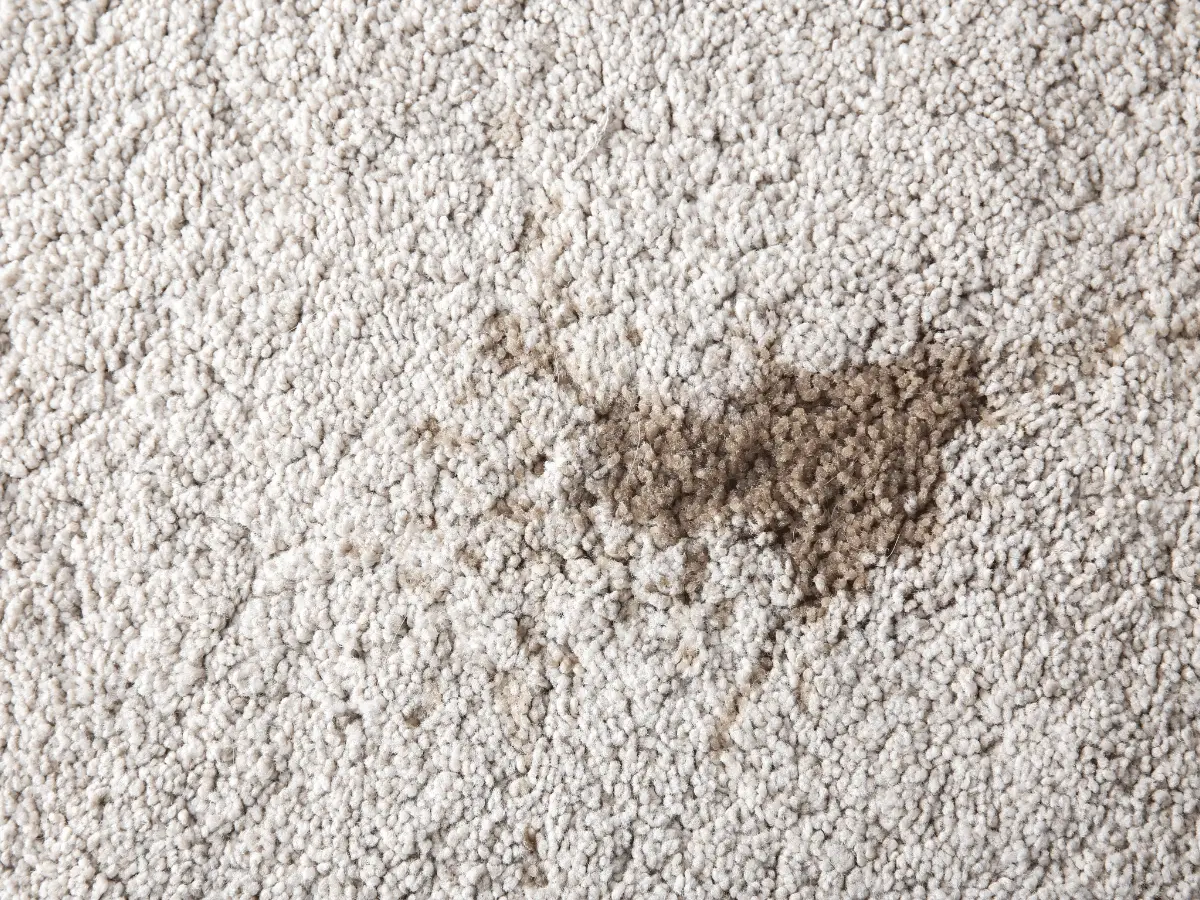
How to Get Oil Out of Carpet and Couches
Cleaning Oil Stains from Carpets
When you’re faced with an oil stain on the carpet, acting quickly is crucial. Start by blotting the stain with a paper towel to soak up as much oil as you can. It’s important to blot rather than rub to avoid spreading the stain.
Next, dab rubbing alcohol onto the stain with a washcloth, continuing to blot gently. Then, whip up a solution of water mixed with a small amount of dishwashing liquid that’s free from lanolin or bleach. Using a sponge, apply this mixture to the stain and blot until the stain lifts.
For more stubborn stains, like those from motor oil, begin by scraping off any excess with a butter knife, being careful not to damage the carpet fibres. Sprinkle baking soda or cornstarch over the stain and let it sit for 20 minutes before vacuuming. If the stain sticks around, apply a dry-cleaning solvent with a clean cloth, followed by a mixture of warm water, white vinegar, and dishwashing detergent. After working this solution into the stain, rinse with cold water and let the area dry.
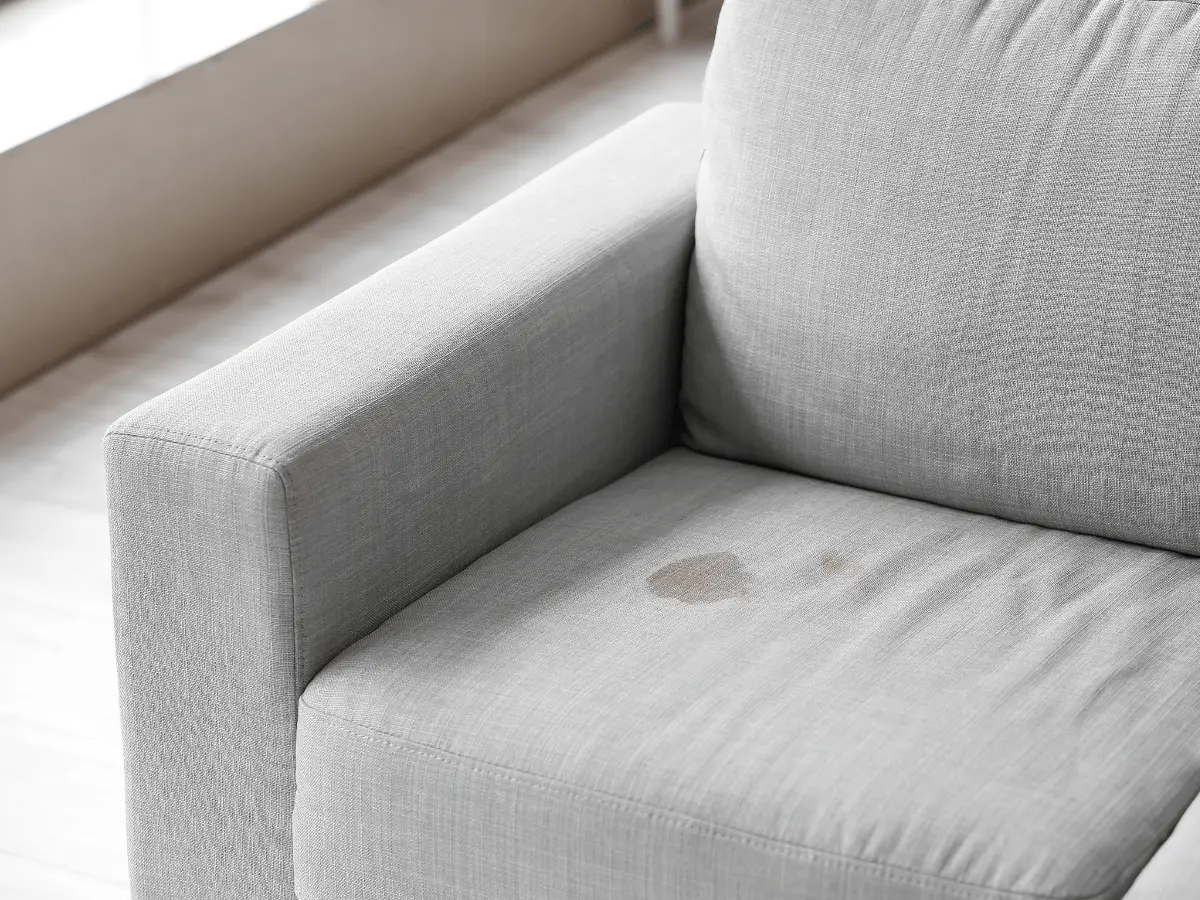
Cleaning Oil Stains from Upholstery
Upholstery has its own set of challenges when it comes to oil stains. For fresh stains, remove as much oil as you can with a rag or plastic utensil. A surprising ally in this battle is WD-40, which contains solvents that can break down the oils.
Alternatively, you can use baking soda to absorb grease; after application, scrub lightly with a toothbrush and vacuum. Alcohol, such as methylated spirits, can also lift oil stains from upholstery. Spray the stain, blot it dry, and then use a wet cloth to remove any residue.
For older stains, you’ll need a more thorough approach. Apply a generous amount of baking soda or cornstarch to the stain and let it sit for at least 20 minutes. Gently remove the powder, then use an old toothbrush with a drop of liquid soap to scrub the area.
Clean the area with a moist paper towel or damp cloth in a circular motion, repeating the process until the stain is gone. Usually, the stain should lift after a few tries.
Rinsing and Drying the Area
After treating the stain, rinse the area with cold water using a clean sponge or cloth, and then blot it dry with a clean towel. Allow the carpet or upholstery to air dry completely. If the stain persists, repeating the process may be beneficial.
In cases where DIY methods are insufficient, especially with oil stains that adhere strongly to fibres, professional stain removal services with specialised equipment and solutions may be necessary. If the stain remains after attempting these methods, seeking professional help before the stain sets in is advisable.
Advanced Cleaning Techniques
Using Specialised Stain Removers
After absorbing as much oil as possible, consider using products specifically formulated for oil-based stains. These removers often provide a more targeted approach than general cleaners. Follow the instructions carefully, applying the product directly to the affected area and allowing it to penetrate the stain before blotting it off. Always conduct a preliminary test on a discreet section of the material to ensure it doesn’t alter the appearance of the fabric.
Heat Transfer Methods
For persistent oil residues, a method involving heat can help transfer the oil from the fabric to an absorbent material like a brown paper bag or towel. Place the absorbent layer over the affected area and gently press with a warm iron. The warmth helps transfer the oil to the paper or towel. However, use a moderate temperature to avoid damaging the fabric, particularly if it’s made of synthetic material.
Enzymatic Cleaners for Stubborn Stains
Enzymatic cleaners are another option for challenging stains, particularly effective on organic oils. These cleaners contain enzymes that specifically target and break down oil molecules. Apply the cleaner, allow the enzymes to work for the recommended duration, then blot and rinse thoroughly. If the stain persists despite these efforts, or if the fabric is particularly delicate, professional cleaning services may be necessary. These experts have access to advanced cleaning agents and equipment that can safely and effectively restore the appearance of your carpet or upholstery.
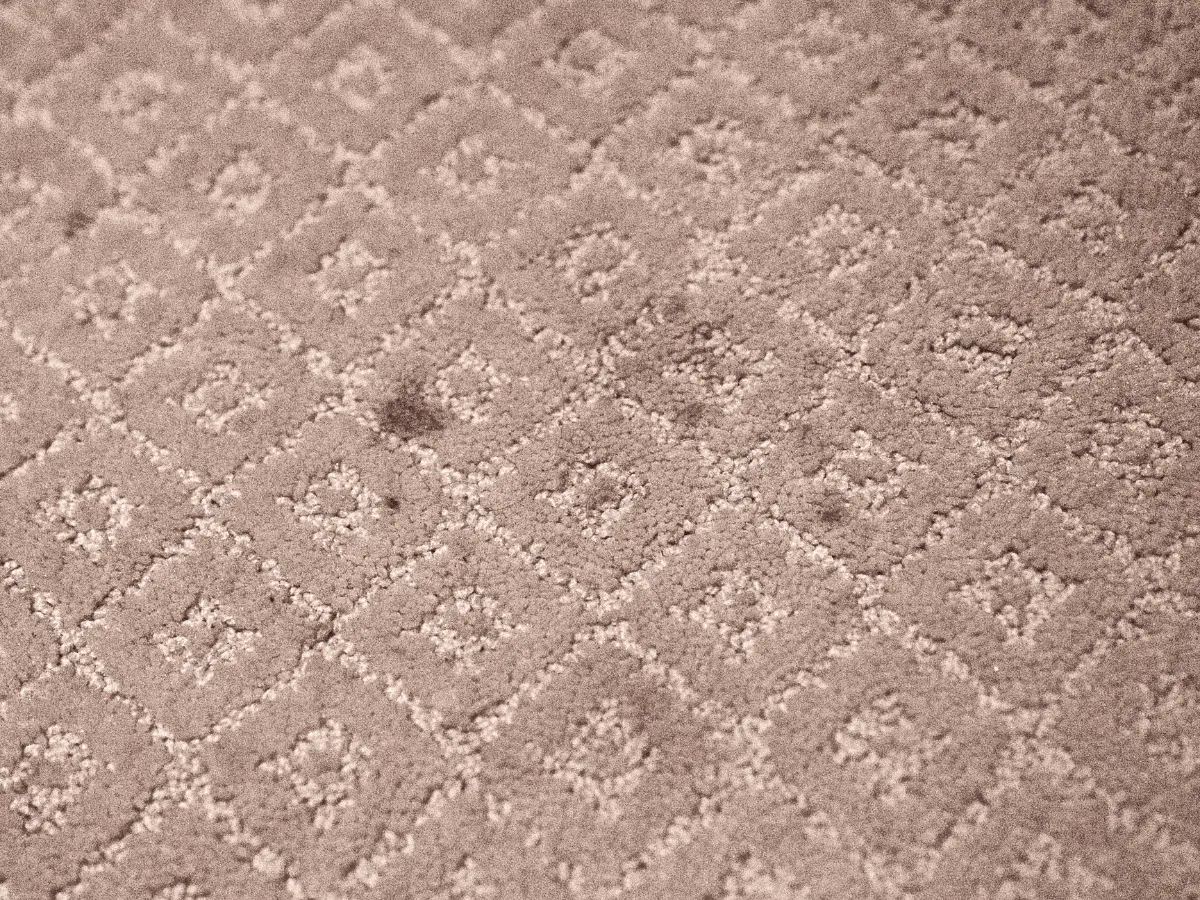
Seeking Professional Help
When to Call the Experts
In certain situations, professional cleaning services become necessary, especially when faced with persistent stains from a variety of sources such as beauty products or pizza grease. These substances can be particularly challenging to remove due to their ability to deeply penetrate and bond with fabric fibres.
Professional assistance is also advisable when there’s a noticeable increase in allergy symptoms among occupants, which may be due to allergens embedded in the carpet. If your efforts to clean the carpet have been unsuccessful, or if you’re trying to eliminate the remnants of road salt, professional expertise can be invaluable. Additionally, regular professional cleaning can help avoid lasting damage and contribute to maintaining indoor air quality.
Visit our stain removal services here.
Embrace a Spotless Space
Whether it’s a splash of salad dressing on your prized couch or a stubborn motor oil footprint on your plush carpet, oil stains needn’t be a permanent blot on your home’s landscape. Armed with the right techniques and a dash of patience, you can tackle most oil-based mishaps with confidence.
Remember, speed is your ally, and the correct method is your weapon of choice against these greasy intruders. From home remedies to specialised products, the path to a clean and inviting space is well within reach. And when oil stains prove to be formidable foes, don’t hesitate to call in the cavalry of professional cleaners for a flawless finish.
Keep your living area pristine and vibrant, because a clean home is the canvas for your life’s best memories.

